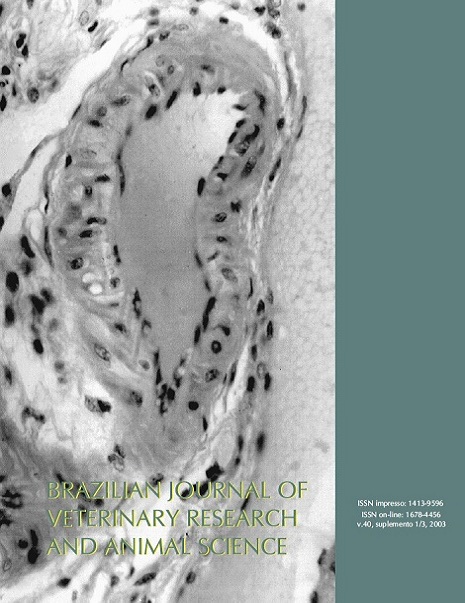Evaluation of the Achatina fulica snail mucoglycoproteic secretion in surgical injury done in rabbits
DOI:
https://doi.org/10.1590/S1413-95962003000900009Keywords:
Escargot, Mucus, Cicatrization, RabbitsAbstract
Escargots are animals capable to produce a glycoproteic secretion by glands located in all the surface of their bodies which among other functions presents anti-bacterial power and participation in the own immunity. The antimicrobioan power of certain substances may aid of repair of wounds with several origins. Thus, the aim of the present study was to evaluate macroscopic and histologically the reparative effects of the mucus of Achatina fulica escargots on lesions made in the skin of rabbits. Incisions were performed in the skin of 15 rabbits, separated in three groups according to the treatment received. Immediately after the lesion, the respective treatments with pure mucus form and in ointment form were supplied, while the other group received no treatment (control group). The macroscopic characteristics of the lesion were registered daily and a biopsy was performed 72 hours after the treatments. The fragments were processed and stained with Masson's trichrome. The macroscopic evolution in the cicatrization process ocurred in a shorter period of time in rabbits from the ointment group, comparativity with the other groups. Histologically, the epidermis of the treated rabbits showed a basal layer of cubic cells, while rabbits of the control group presented a basal layer of cylindrical cells with cutaneous debris.Downloads
Download data is not yet available.
Downloads
Published
2003-01-01
Issue
Section
UNDEFINIED
License
The journal content is authorized under the Creative Commons BY-NC-SA license (summary of the license: https://
How to Cite
1.
Martins M de F, Caetano FAM, Sírio OJ, Yiomasa MM, Mizusaki CI, Figueiredo LD de, et al. Evaluation of the Achatina fulica snail mucoglycoproteic secretion in surgical injury done in rabbits. Braz. J. Vet. Res. Anim. Sci. [Internet]. 2003 Jan. 1 [cited 2024 Apr. 19];40(supl.):213-8. Available from: https://www.revistas.usp.br/bjvras/article/view/11419





